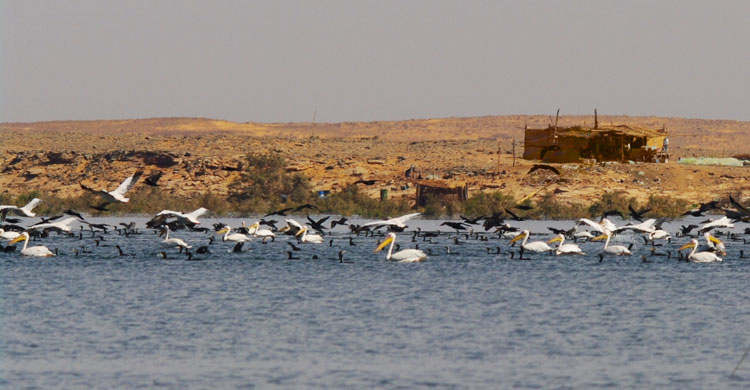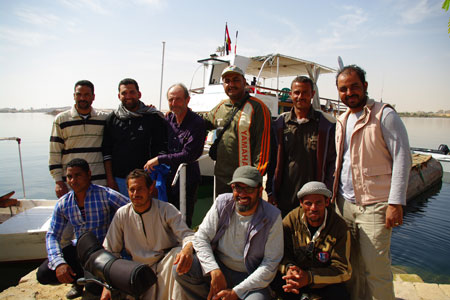Waterbird Census Capacity at Lake Nasser Strengthened

Migratory birds at Lake Nasser © ONCFS - Defos du Rau and Mondain Monval
Bonn, 22 February 2015 - In June 2013 in El Kala, Algeria, during their AEWA Sub-regional National Focal Point meeting, all five North African countries agreed that Objective 3 of the AEWA Plan of Action for Africa - “to increase knowledge about species and their populations, flyways and threats to them as a basis for conservation action” - was to be the main priority for the sub-region during the current intersessional period. Within this objective, the expected result 3.1.1 which aims at increasing the quantity and quality of waterbird population data in Africa, is of particular concern for the Technical Support Unit (TSU) to the AEWA African Initiative.

TSU members, Jean-Yves Mondain-Monval and Pierre Defos du Rau – representing the Office National de la Chasse et de la Faune Sauvage of France, therefore participated in the International Waterbird Census in Egypt from 16 to 29 January 2015 to support Dr. Wed Abdou of the Egyptian Environmental Affairs Agency (EEAA) and its Aswan Nature Conservation Sector (NCS) team (Hosni Helmy Asran, Haitham Ibrahim, Amr Abd Elhady, Mohamed Ezat).
The two main objectives of this collaborative project were to survey two major African wetlands, the Egyptian part of Lake Nasser and the Nile, from Aswan to Asyut. Lake Nasser is the largest dammed reservoir in Africa being 500km long and with a perimeter of 8,000km. Furthermore, a new telescope was provided to the Aswan NCS team. The first results of this remarkable effort include more than 600 Ferruginous Ducks (Aythya nyroca) counted around Aswan, representing a number of international significance for the specie. Further work is recommended in Lake Nasser in the future to better control the continuing poaching of birds (waterbirds included) and to improve management of waterbird hunting. Lake Nasser was surveyed using a systematic sampling of around 90 shoreline transects and it is hoped that future monitoring of this major wetland of clear international importance would follow a similar approach.
Thanks are due to the team at the EEAA and NCS for their excellent organization and field support.
Last updated on 04 March 2015


